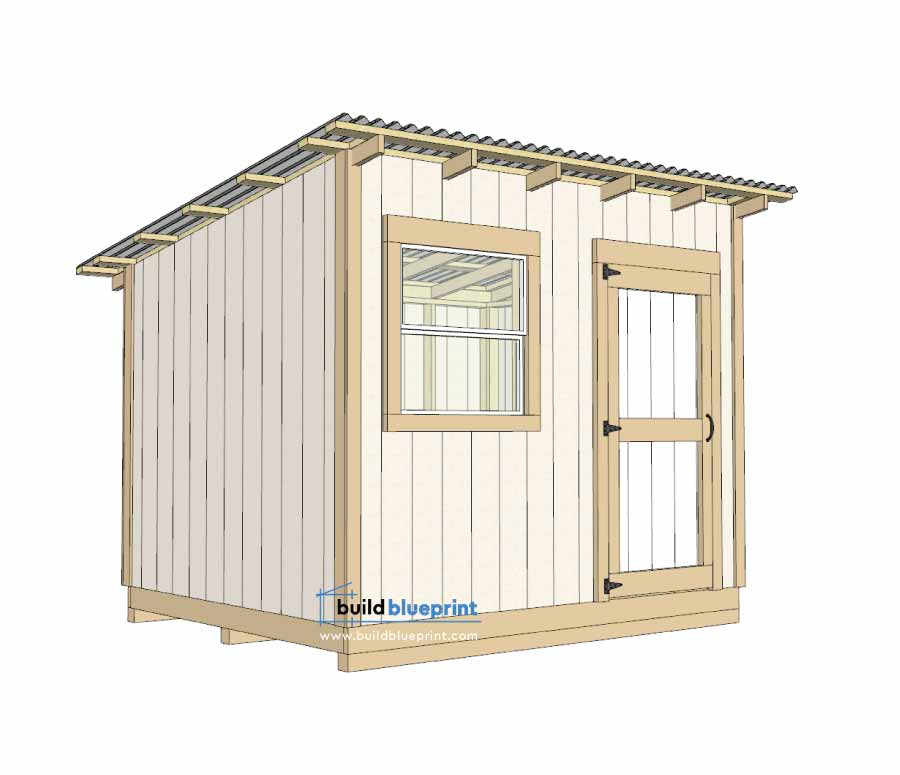
Hey there, fellow DIYers! Looking to add some extra storage space to your property without breaking the bank? Building your own 8x10 shed is a fantastic project that'll give you a sense of accomplishment and a new, functional space for less than you'd think.
Now, I know what you're thinking: "Building a shed? Sounds complicated!" But trust me, it's not as daunting as it seems. With the right plans and a little elbow grease, you can have a sturdy, weather-resistant shed in your backyard in no time.
Let's dive into the smart way to build a budget-friendly 8x10 shed, breaking it down into easy-to-follow steps:
1. Planning is Key: The Blueprint to Success
Before you grab your hammer and nails, it's crucial to have a solid plan. This means deciding where your shed will go, what you'll use it for, and what materials you'll need.
Location, Location, Location: Think about where the shed fits best in your yard, considering access for materials, sunlight, and proximity to your house.
Function First: Will it be a tool shed, a workshop, or a mini-greenhouse? This will determine the layout, features, and potential need for electricity or plumbing.
Material Mayhem: Research different materials like pressure-treated lumber, plywood, and roofing. Factor in local availability and pricing to find the most cost-effective options.
2. Tools of the Trade: Your DIY Arsenal
You'll need a few essential tools to get the job done right:
Power Tools: A circular saw, drill driver, jig saw, and a nail gun (optional, but highly recommended for speed and efficiency).
Hand Tools: Level, tape measure, hammer, screwdriver, and a trusty pencil.
Safety Gear: Safety glasses, work gloves, and ear protection are a must.
3. The Foundation: Setting a Solid Base
A strong foundation is crucial for a long-lasting shed. Here are a few options:
Concrete Slab: The most durable option, but requires concrete pouring and a bit more effort.
Concrete Blocks: A simpler alternative to a slab, providing a stable base for your shed.
Pressure-Treated Skids: A cost-effective option for a less permanent structure, but make sure the ground is level.
4. Framing the Future: Building the Skeleton
Once the foundation is set, you're ready to build the frame. Use pressure-treated lumber for the foundation and wall studs to prevent rot.
Floor Framing: Create a strong floor frame with joists spaced 16 inches apart. Make sure the floor joists are anchored securely to the foundation.
Wall Framing: Use 2x4 lumber for the wall studs, spaced 16 inches apart. Remember to add a header above the door and windows for extra support.
Roof Framing: Choose a simple gable roof design. The rafters should be strong enough to support the weight of the roof materials.
5. Siding and Roofing: The Finishing Touches
Now comes the fun part! Choose materials that suit your budget and style.
Siding Options: Consider vinyl siding, wood siding, or even corrugated metal for a rustic look.
Roofing Options: Shingles, metal roofing, or even recycled materials like corrugated plastic can be used for the roof.
6. Windows and Doors: Adding Light and Access
Windows and doors not only improve aesthetics but also provide ventilation and access.
Window Choices: Consider the size and placement of windows based on your shed's function and desired light.
Door Options: Sliding doors, double doors, or a single door â€" choose what fits your needs and budget.
7. Finishing Touches: Adding Flair and Function
Interior Walls: Consider adding plywood or drywall to the interior walls for a more finished look.
Shelves and Storage: Install shelves or cabinets to organize your belongings.
Electrical Wiring: If you plan on using electricity, hire a qualified electrician to safely install wiring.
8. The Cost Factor: Balancing Quality and Budget
Building your own shed is definitely cheaper than buying a pre-built one, but it's important to factor in all costs.
Materials: The biggest expense will be the materials. Shop around for the best deals and consider using recycled or salvaged materials where possible.
Tools: If you don't have all the tools, renting them can save you money in the long run.
Labor: Your time and effort are valuable. Factor in your labor costs and compare it to hiring a professional.
9. Saving Money the Smart Way:
Shop Around for Materials: Compare prices at different lumber yards and hardware stores.
Consider Salvage: Look for recycled or salvaged materials for the siding or roofing.
DIY Skills: Use your existing skills or learn new ones to save money on labor.
Prioritize Needs: Focus on essential features and prioritize your budget.
10. Enjoy Your New Shed!
Once you've completed your 8x10 shed, give yourself a pat on the back! You've created a valuable addition to your property with your own hard work and creativity.
Bonus Tips:
Seek Inspiration: Look for shed plans and ideas online, in magazines, or at home improvement stores.
Think Long-Term: Choose materials that will withstand the elements and last for years to come.
Don't Be Afraid to Ask for Help: If you need assistance with specific steps, ask a friend, family member, or a knowledgeable neighbor for guidance.
Building your own 8x10 shed is a rewarding experience that combines practicality and creativity. So, grab your tools, roll up your sleeves, and start building your dream shed today! Remember, it's not about perfection, it's about the satisfaction of creating something yourself. And who knows, maybe you'll even discover a hidden talent for carpentry along the way!
No comments:
Post a Comment